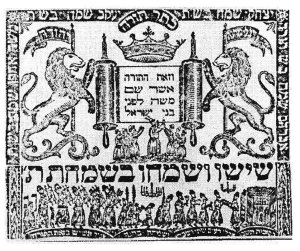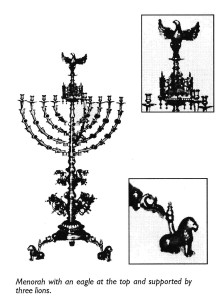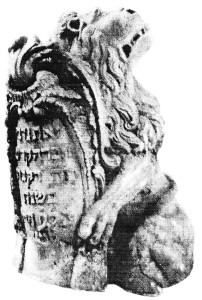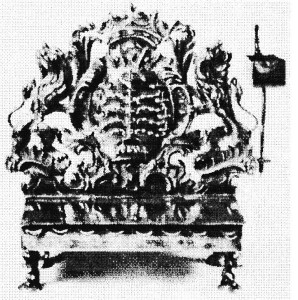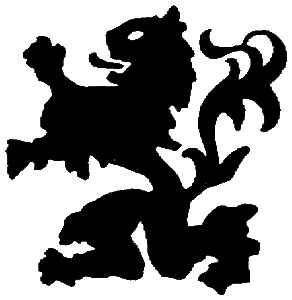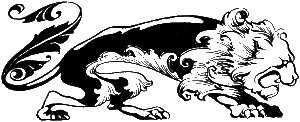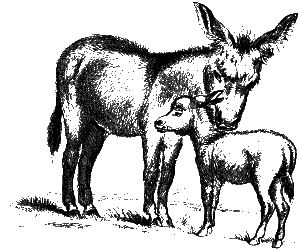Part 2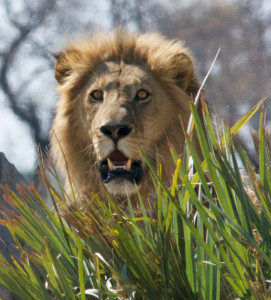
The Lion of Judah
A Lion and a Lamb
We saw in PART 1: The Heavenly Throne Room that when Christ arrived in Heaven, He was announced as, “The Lion of the Tribe of Judah” and found worthy to open the seals on the Scroll. But when John turned his head to look at this Lion, he saw a “Lamb as though it had been slain.” (Rev. 5:5-6)
 We know that symbolically Jesus was represented by the Passover lamb. And we know that He was indeed our sacrificial lamb that removed our sin. John the Baptist said, “Behold the lamb of God, which take away the sin of the world!” John 1:29, 36.
We know that symbolically Jesus was represented by the Passover lamb. And we know that He was indeed our sacrificial lamb that removed our sin. John the Baptist said, “Behold the lamb of God, which take away the sin of the world!” John 1:29, 36.
But where does this reference to a Lion come from?
It begins with an ancient prophecy.
An Ancient Prophecy – Genesis 49:8-12
On his death-bed, the patriarch Jacob reached out to his sons and bestowed a blessing on each of them. His blessing on Judah holds a profound prophecy about Messiah. At first it appears that Jacob is speaking directly to his son.
“Judah, you are he whom your brothers shall praise; your hand shall be on the neck of your enemies; your father’s children shall bow down before you. Judah is a lion’s whelp; from the prey, my son, you have gone up. He bows down, he lies down as a lion; and as a lion, who shall rouse him?”
But then Jacob begins to speak with a prophetic voice.
“The scepter shall not depart from Judah, nor a lawgiver from between his feet, until Shiloh comes; and to Him shall be the obedience of the people.
“Binding his donkey to the vine, and his donkey’s colt to the choice vine, He washed his garments in wine, and his clothes in the blood of grapes. His eyes are darker than wine, and his teeth whiter than milk.” (Genesis 49:8-12)
We see these elements in this prophecy:
-
- Judah is called a lion’s whelp (or cub).
- Judah will hold the scepter and keep the lawgiver between his feet.
- That scepter will pass to Shiloh.
- Once Shiloh comes, then the people will gather to Him.
- He binds his donkey to the vine and the donkey’s colt to the choice vine.
- His garments are red, dipped in the blood of grapes.
- His eyes are darker than wine and his teeth whiter than milk.
1. A Lion’s Whelp
 Let’s take a look at each of the elements of this prophecy, beginning with the lion. Jacob says,
Let’s take a look at each of the elements of this prophecy, beginning with the lion. Jacob says,
“Judah is a lion’s whelp; from the prey, my son, you have gone up. He bows down, he lies down as a lion; and as a lion, who shall rouse him?” (Gen. 49:9)
Since the time of Jacob’s blessing on Judah, the tribe has always been represented as a lion.
-
- The lion appeared on banners or standards held high before the camp as it marched. If not actually so at the time, this is how future artists portrayed their march.
- Lions are prevalent throughout Jewish art as representing the tribe of Judah.
- Lions often appear beside the tables of the Law.
- There was an abundance of lions on King Solomon’s throne:
14 Lions on King Solomon’s Throne
“Moreover the King made a great throne of ivory, and overlaid it with pure gold. The throne had six steps, and the top of the throne was round at the back; there were armrests on either side of the place of the seat, and two lions stood beside the armrests. Twelve lions stood there, one on each side of the six steps; nothing like this had been made for any other kingdom.” 1 Kings 10:18-20
Another Bible scholar wrote:
“The lion, king of the forest, is a fitting symbol of this tribe, from which came David, and the Son of David, Shiloh, the true ‘Lion of the tribe of Judah,’ to whom all powers shall finally bow and all nations render homage.” E.G. White, Patriarchs and Prophets, p. 236.
Take some time to look at Jewish art. It is filled with lions, rampant lions (or standing lions) and eagles.
 The lions represent Judah as the one who upholds the Law. You will especially see lions guarding the Ten Commandments, the Stone Tables and the Torah scrolls.
The lions represent Judah as the one who upholds the Law. You will especially see lions guarding the Ten Commandments, the Stone Tables and the Torah scrolls.
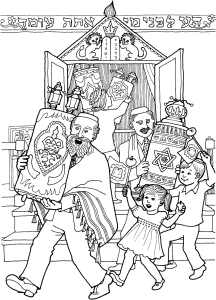 This page is from a Jewish coloring book and represents Simhat Torah, or the celebration that comes at the end of the Feast of Tabernacles. Simhat Torah means “rejoicing in the law.” The Rabbis are carrying Torah scrolls and the children are waving flags with the Tables of Stone pictured. Notice the two rampant lions guarding the Tables of Stone at the top of the Torah cabinet.
This page is from a Jewish coloring book and represents Simhat Torah, or the celebration that comes at the end of the Feast of Tabernacles. Simhat Torah means “rejoicing in the law.” The Rabbis are carrying Torah scrolls and the children are waving flags with the Tables of Stone pictured. Notice the two rampant lions guarding the Tables of Stone at the top of the Torah cabinet.
Remember the verse? “The scepter will not depart from Judah, nor a lawgiver from between his feet until Shiloh comes.” Here is a Simhat Torah flag showing two lions holding the Torah beneath a crown.
Eventually the lions become scrollwork. Once we know this, we see even more lions in decorative art.
We have seen that the symbol of the Lion represents the Tribe of Judah. The rest of Genesis 49:8-12 contains many pictures of Messiah:
- Donkey and Colt
- Stained Garments Dipped in Wine
- Shiloh
- Gathering of the people
- Scepter
Let’s look at each of these.
2. Donkey and Colt (Gen. 49:11)
“Binding his donkey to the vine, and his donkey’s colt to the choice vine,…” (Genesis 49:11)
There are other references in Scripture relating to the donkey and her colt. All of them relate to Jesus on the triumphal day when He rode into Jerusalem amid palm fronds waving and shouts of Hosanna!
“Rejoice greatly, O daughter of Zion; shout, O daughter of Jerusalem: behold, thy King cometh unto thee: He is just, and having salvation; lowly, and riding upon an ass, and upon a colt the foal of an ass.” (Zechariah 9:9)
Jesus said to His disciples,
“Go into the village over against you, and straightway ye shall find an ass tied, and a colt with her: loose them, and bring them unto me. And if any man say ought unto you, ye shall say, The Lord hath need of them; and straightway he will send them.” (Matthew 21:2-3)
“On the next day much people that were come to the feast, when they heard Jesus was coming to Jerusalem, took branches of palm trees, and went forth to meet him, and cried, ‘Hosanna: Blessed is the King of Israel that cometh in the name of the Lord.’
“And Jesus, when he had found a young ass, sat thereon; as it is written, ‘Fear not, daughter of Sion: behold, thy King cometh, sitting on an ass’s colt.’
“These things understood not his disciples at the first: but when Jesus was glorified, then remembered they that these things were written of him, and that they had done these things unto him.” (John 12:12-16)
The people of the day had misinterpreted the meaning of this ride into Jerusalem. They had imagined from the prophecy in Zechariah that He was soon to be crowned as their earthly king. But if they had a better understanding of Scripture, they would have seen that this was actually a fulfillment of an entirely different prophecy. In Exodus 12:3 we read:
“Speak ye unto all the congregation of Israel, saying, In the tenth day of this month they shall take to them every man a lamb, according to the house of their fathers, a lamb for an house.”
Taking the Lamb into the household was in preparation for the Passover sacrifice that was to be made four days later. This allowed the family to form a bond with the helpless little creature so that they could view its death as a personal loss—not with the cold indifference that was heard in the voices that shouted, “Crucify Him!”
Jerusalem was taking her Lamb into her household in preparation for its slaughter. This was surely one of the first Scriptures about His death that Jesus opened to His disciples on the road to Emmaus. He did not ride into Jerusalem in order to sit on the throne of Israel, but so that He could hang on a cross as her Saviour. For no greater display of love can a man show, than to give his life for his friends. (John 15:13)
3.Garments dipped in wine
“He washed his garments in wine, and his clothes in the blood of grapes.” (Genesis 49:11)
We come into a conversation in Isaiah 63:
“Who is this who comes from Edom, with dyed garments from Bozrah; this One who is glorious in His apparel, traveling in the greatness of His strength?”
“I who speak in righteousness, mighty to save.”
“Why is Your apparel red, and Your garments like one who treads in the winepress?”
“I have trodden the winepress alone, and from the peoples no one was with Me. . . . Their blood is sprinkled upon My garments, and I have stained all My robes. I looked, but there was no one to help, and I wondered that there was no one to uphold. Therefore My own arm brought salvation for Me.” (Isaiah 63:1-5)
At first we think that this man who comes from Edom is some kind of nobleman since he is “travelling in the greatness of his strength” and is “glorious in his apparel.” But then we see that his dyed garments resemble someone who was trampling the grapes in a wine vat. Once we begin to see that this text is speaking about Christ, these two opposing pictures begin to make sense: one who is great and glorious and one whose garments have been stained in a wine press.
Both Edom and Bozrah are just figurative speech. The real importance of these verses is the fact that this Man who declares His name to be “I Who Speak in Righteousness, Mighty to Save” looked around and saw that there was no one else to bring salvation to the world. So His own arm brought salvation. This is a work that He alone could do.
Then He says, “Their blood is sprinkled on My garments, and I have stained all My robes.” Now we know that this red dye that resembles the juice of grapes is actually “their blood.” The priests in the temple would sprinkle the blood of the sacrifice onto their robes in a symbolic gesture of taking the sin onto themselves. These filthy garments that have been stained with the blood of grapes represent Jesus, at that moment standing as our High Priest, who has carried our sins on His garments so that we can be free of sin and live. When we read in Genesis that He “washed his … robes in the blood of grapes,” we are seeing another prophetic symbol of the Messiah who has carried our sins on His person to the Cross.
If you were to continue reading in Isaiah 63, you would also see that He treads the winepress in anger and fury. This is because He will wipe out and tread down all sin. For those people who refuse to give up their sin, they will be trampled along with their cherished sin in the end.
You can learn more about these filthy garments when you read about Joshua standing before the Angel in Zechariah 3 and in Part 4: War!
4. Shiloh
As you read the passage in Genesis 49, when did you start to notice that this might be a prophecy of Messiah? You should have known for sure that these verses were pointing forward when you came to the word “Shiloh.” Since ancient times, it has always been known that Shiloh refers to the Messiah.
-
- One Jewish author wrote, “The ancient rabbis said (and most Bible scholars agree) that ‘Shiloh’ refers to the Messiah.” (Harold A. Sevener, 1990-1991 Messianic Jewish calendar.)
- This word “Shiloh,” Strong’s number H7886, appears only once in the Bible.
- The city of “Shiloh” is a different word—a different Strong’s number H7887.
- Shiloh means “tranquil.”
- It is also defined as “the One to whom it belongs,” or “the One to whom tribute belongs.” This means the passage in Genesis 49:10 reads, “The scepter will not depart from Judah,… until the One to whom it belongs shall come.”
5. Gathering of the People
We read that Shiloh will have the obedience of the people. But it is better stated in the Old King James Version which says, “And to Him shall the gathering of the people be.” (Gen. 49:10 KJV)
The Old Testament affirms this prophecy is for all the people, not just the nation of Israel.
“And in that day there shall be a Root of Jesse, who shall stand as a banner to the people; for the Gentiles shall seek Him.” (Isaiah 11:10)
Jesse was the father of King David. When we see the Lion of the tribe of Judah, the Root of David, we are also seeing that He came through Jesse as well. This descendent of Jesse and David is Jesus. And He showed the fulfillment of this prophecy by His act of opening the Gospel message to the Gentiles. We see Christ proclaiming this prophecy when He stated,
“I, if I am lifted up, I will draw all people to Myself.” (John 12:32)
6. Scepter
The scepter is the symbol of power or rule. Sevener wrote:
“The scepter was a symbol of regal command. In ancient times it was a staff which the king held in his hand when he spoke in public assemblies. When he sat upon his throne, the king rested the scepter between his feet.
“In other words, Jacob… promised that the kingly rule of Judah would continue until the coming of the One to whom—and for whom—that rule belongs. The One to whom it belongs is the Messiah.”
Judah is the tribe that held the Scepter and had rule over the other tribes, despite the fact that King Saul was from the tribe of Benjamin. David said,
“However the LORD God of Israel chose me above all the house of my father to be king over Israel forever, for He has chosen Judah to be the ruler.” (1 Chronicles 28:4)
God promised that David would carry the Scepter:
“Now therefore, thus shall you say to My servant David, thus says the LORD of hosts: ‘I took you from the sheepfold, from following the sheep, to be ruler over My people, over Israel.…
“‘I will set up your seed after you, who will come from your body, and I will establish his kingdom.… And your house and your kingdom shall be established forever before you. Your throne shall be established forever.’” (2 Samuel 7:8-16)
And that David’s seed would endure forever:
“I have found My servant David; with My holy oil I have anointed him.… My mercy I will keep for him forever, and My covenant shall stand firm with him. His seed also I will make to endure forever, and his throne as the days of heaven.… My covenant I will not break, nor alter the word that has gone out of My lips.
“Once I have sworn by My holiness; I will not lie to David: his seed shall endure forever, and his throne as the sun before Me. It shall be established forever like the moon—even like the faithful witness in the sky. Selah” (Psalm 89:20-37)
That “Seed” from David’s line would be the Messiah:
“Therefore, [David] being a prophet, and knowing that God had sworn with an oath to him [David] that of the fruit of his body, according to the flesh, He would raise up the Christ to sit on his throne.” (Acts 2:30)
In order to be our King, Jesus could only be chosen from one of our brothers as the Scripture had said:
“You shall surely set a king over you whom the Lord your God chooses; one from among your brethren you shall set as king over you; you may not set a foreigner over you, who is not your brother.” (Deuteronomy 17:15)
In the end of David’s line, Messiah will take the Scepter. Speaking of Messiah we read:
“There shall come forth a Rod from the stem of Jesse, and a Branch shall grow out of his roots. The Spirit of the Lord shall rest upon Him….
“His delight is in the fear of the Lord,… but with righteousness He shall judge the poor, and decide with equity for the meek of the earth. …
“They shall not hurt nor destroy in all My holy mountain, for the earth shall be full of the knowledge of the Lord.… And in that day there shall be a Root of Jesse, Who shall stand as a banner to the people; for the Gentiles shall seek Him, and His resting place shall be glorious.” (Isaiah 11:1-10)
And so, through Christ, David’s Scepter Will Remain Forever
“Your throne, O God, is forever and ever; a scepter of righteousness is the scepter of Your kingdom.” (Psalm 45:6)
Summarizing:
-
- Genesis 49 says that Judah would hold the scepter. This promise was passed on to David and then on to Messiah.
- All the kingdoms of this earth will end and Christ will take the throne. (Revelation 11:15)
- Christ’s throne will remain forever. (Psalm 45:6; Hebrews 1:8)
- He will judge with Righteousness. (Isaiah 11:4)
- This is the gospel, or “good news,” of the kingdom that Christ spoke of in Matthew 24:14. This message of Christ taking the scepter, and retaining the kingdom forever, will be the final message that goes out to the world. Jesus said,
“And this gospel of the kingdom will be preached in all the world as a witness to all the nations, and then the end will come.” (Matthew 24:14)
All these come together in Christ:
“Now I saw heaven opened, and behold, a white horse. And He who sat on him was called Faithful and True, and in righteousness He judges and makes war.
“His eyes were like a flame of fire, and on His head were many crowns. He had a name written that no one knew except Himself.
“He was clothed with a robe dipped in blood, and His name is called The Word of God.…
“Now out of His mouth goes a sharp sword, that with it He should strike the nations. And He Himself will rule them with a rod of iron.
“He Himself treads the winepress of the fierceness and wrath of Almighty God.” (Revelation 19:11-15)
A Story of Jesus from Genesis 49 to Revelation 19
-
- Judah will rule until the Scepter passes to Shiloh—The Messiah.
- God promised David that his scepter of rule would last forever through his Seed. Jesus was born from the Tribe of Judah through the lineage of David, a Rod from the stem of Jesse, to take that Scepter and rule.
- Judah was the Lion until Christ fulfilled the purpose of the tribe by becoming the Lion who came out of the Tribe of Judah.
- In Daniel we see this Lion of Judah rising to its feet and taking on the form of a Man.
- Jesus took on the form of humanity, becoming a brother to all mankind. In this form He is able to both redeem us and be our King. The often used picture of the Rampant (standing) Lion, is a reference to the Messiah standing on a man’s feet as He rises out of Judah. How often the Jewish artists have used this symbol without recognizing its meaning!
- Jesus stained His garments red in our blood by taking on our sins.
- Jesus rode triumphantly into Jerusalem on the colt of a donkey.
- By His humanity, He is able to gather all people together and reunite them with His Father.
- By His sinless life, His death and His resurrection, He has earned the right to unseal the scroll that will lead to the Kingdom.
Scepter passes: Judah ⇒ David ⇒ Christ
In a clear and connected string of truth, the entire Bible shows that Judah was a lion. The prophecy was for Judah to hold the scepter until Shiloh came. And the promise was to David that his “Seed” would hold the throne forever. This “Seed” is Christ whom we see standing in the heavenly throne room ready to be crowned. Now a human, descended from Judah through David’s lineage, He is Shiloh, the Lamb, and the Lion. This is why He is called:
The Lion of the Tribe of Judah, the root of David
Back in the Throne Room of Revelation 5, God gave us a view of Christ’s inauguration in Heaven. This Throne Room scene happened shortly after the Cross when Christ had fulfilled the role of becoming the Messiah that Judah had long been hoping for. Having taken on our human bloodline, the Son of Man can claim the right to buy back our freedom. Having taken on the bloodline of Judah, Shiloh can take the scepter from Judah. And now Jesus, the son of David, is seated on His throne in the Heavenly courts.
No Kingdom, Yet …
In Revelation 5 we see Christ’s inauguration into heaven. A new song is sung and a new level of worship is begun. But He has not yet received the kingdom.
We read about His reward:
“Worthy is the Lamb who was slain to receive Power and Riches and Wisdom and Strength and Honor and Glory and Blessing.” (Revelation 5:12)
At that moment He received Power, Riches, Wisdom, Strength, Honor, Glory and Blessing. But there is more work ahead before He receives the reward of the Kingdom. We saw that Jesus, the Lion of Judah and the Lamb, has taken the sealed Scroll from the hand of Him who sits on the throne. It isn’t until the Lion has finished opening each of these seals, one by one, that He will be able to fully receive the Kingdom. It isn’t until the Seventh Seal and the Seventh Trumpet in Revelation Chapter 11, that we see Him receive the Kingdom. This is at the Final Atonement. Then Worship will change again in Heaven:
“Then the seventh angel sounded: and there were loud voices in heaven, saying, ‘The kingdoms of this world have become the kingdoms of our Lord and of His Christ, and He shall reign forever and ever!’ ” (Revelation 11:15)
And so, with this goal in sight, Jesus goes forth conquering.…
“When the Lamb opened one of the seals,… I looked, and behold, a white horse. He who sat on it had a bow; and a crown was given to him, and he went out conquering and to conquer.” (Revelation 6:1-2)
At the Cross Jesus died as the Lamb. At His inauguration in Heaven He stood as the Lion of the Tribe of Judah. Now, riding on the white horse, the bow showing that He is a hunter of men, Jesus still has a work to accomplish. Each act of opening the Seals on the Scroll will bring Him closer to His reward of the Kingdom.
![]() View or Download a PDF of this page
View or Download a PDF of this page

